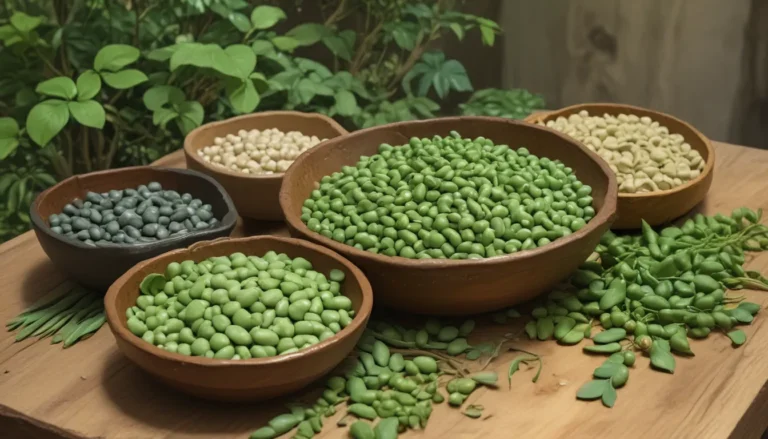The Complete Guide to Growing and Caring for Angelica

Are you ready to add a unique touch to your herb garden this season? Look no further than angelica, the “herb of the sun” as described by famous 17th-century British herbalist Nicholas Culpeper.
Angelica is a plant that will not only captivate visitors with its aromatic scent and impressive height of up to eight feet, but also reward you with edible stems, flavorful leaves, and medicinal properties. Let’s dive into the world of angelica and explore how to grow and care for this stunning herb.
Discovering Angelica
What Is Angelica?
Angelica, a member of the Apiaceae family, boasts hollow stems in green or purple, with distinct green leaflets and large round flower heads containing multiple yellow or green umbels. This biennial plant is a showstopper in the garden, self-seeding easily to ensure its presence year after year.
Cultivation and History
With its origins dating back to at least 800 AD, angelica’s exact birthplace remains a mystery, though it is thought to hail from regions like Norway, Russia, and Syria. This herb has a rich history of culinary and medicinal use, believed to possess spiritual powers and used as a remedy for various ailments.
The Medicinal Magic of Angelica
Angelica’s fleshy root, leaves, and seeds have been used in traditional herbal medicine for centuries. From aiding digestion to combating respiratory issues, angelica is a versatile herb. However, a word of caution: always consult with a healthcare professional before incorporating angelica into your health routine.
Propagating Angelica
From Seed
Propagating angelica from fresh, ripe seeds is the best way to get started. Ensure they receive light to germinate, keeping the soil moist until seedlings appear.
From Seedlings or Transplants
Alternatively, you can start with seedlings or transplants, following specific guidelines to ensure successful germination and growth.
Division
While division isn’t the preferred propagation method for angelica due to its taproot, it can be done with care to encourage optimal growth.
How to Grow Angelica
Angelica thrives in rich, moist, slightly alkaline soil and prefers full sun to part shade. Proper watering, mulching, and weed control are key to maintaining healthy angelica plants. Remember, angelica is native to cooler climates, so shade may be necessary in hotter regions.
Growing Tips
- Start seeds in peat pots to avoid disturbing roots during transplanting.
- Avoid transplanting large plants, as they have sensitive taproots.
- Cutting stalks at the end of the first year promotes flowering in the second year.
- Ensure soil is consistently moist without becoming waterlogged.
- Mulch to retain soil moisture and prevent weed growth.
Where to Buy Angelica
If you’re eager to include angelica in your herb garden, seeds are available from various sources, offering different varieties suitable for different USDA zones. Consider purchasing seeds from reputable suppliers to kickstart your angelica growing journey.
Managing Pests and Disease
While angelica is relatively resilient to pests and diseases, it’s essential to be vigilant. Keep an eye out for common pests like aphids, leaf miners, and spider mites, as well as potential diseases such as crown rot. Implement preventive measures and treatments to ensure your angelica plants remain healthy and thriving.
Harvesting and Preserving Angelica
Angelica is a versatile herb, with all its parts being edible. Harvest leaves in the first year and roots in the second year, ensuring you leave some plant parts intact for self-seeding. Explore various preservation methods such as drying, candying, or making jams to enjoy angelica’s flavors and benefits year-round.
Quick Reference Growing Guide
- Plant Type: Biennial herb
- Native to: Northern Europe, Middle East
- Hardiness (USDA Zone): 4-9
- Exposure: Full sun to part shade
- Water Needs: Moderate to high
- Height: 3-8 feet
- Spread: 2-4 feet
- Common Pests: Aphids, leaf miners, spider mites
- Common Disease: Crown and root rot
Conclusion: Embrace Angelica in Your Garden
Angelica is truly an angelic addition to any herb garden, offering beauty, fragrance, flavor, and medicinal benefits. By following the guidelines shared in this comprehensive guide, you can successfully grow and care for angelica plants, creating a harmonious environment where this remarkable herb can thrive. Share your angelica growing experiences in the comments below and let’s continue to spread the magic of this captivating herb. Happy gardening!





